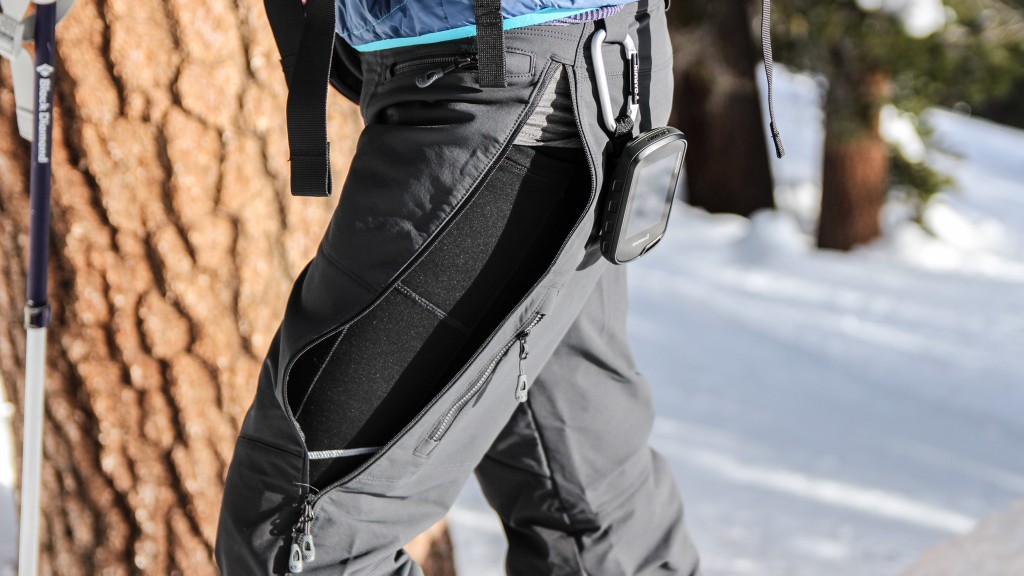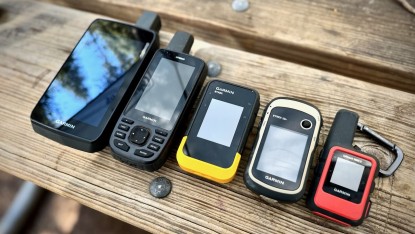Garmin Oregon 700 Review
Our Verdict
Our Analysis and Test Results
Garmin did away with their Oregon 600 series, it's all 700's now. The 700 series offers an aggressive amount of track and waypoint storage. While it doesn't come with pre-loaded maps, this doesn't really bother us because we'd rather get a smaller scale map than the 1:100k topo that comes preloaded. The 750 also comes with an 8-megapixel camera.
Reception
The reception of the Oregon 700 is quite good, and it is likely you will only experience a slight difference in performance under the deepest cover. Like most of Garmin's GPS units, it can access both the GPS and the GLONASS satellite networks, and with the improved antenna from the 600 series, this unit does pretty darn well. While there are similarly priced models that offer absolute accuracy for the same price, don't expect the same touch-screen performance that this unit provides.
Ease of Use
Since all but the most stubborn Luddites these days have smartphones, the Oregon 700 is an easy and intuitive unit to use. After turning on, the pre-set activity profiles pop up, and upon selection show a map of your location. You can swipe left or right to show different information (altitude, time/distance, compass, etc.), and shrink or expand the map with two fingers. The power button also acts as a menu button, and the other one marks a waypoint. It's nice to have continuity in all the electronics in your life — but if you expect to use this GPS unit in cold, or really any weather that requires gloves, we suggest looking elsewhere.
The Oregon 700 also has some connectivity to your smartphone, like active weather (which does use cellphone data), VIRB remotes for Garmin cameras, and live tracking. New users were confused about how to find a menu or how to start a track for a minute. They did consult a number of useful YouTube videos. Once you get the basics down by playing around in a parking lot, it becomes fairly intuitive. Finding all the details from there on out is easier. That said, there are a lot of random functions that it takes time and an internet connection to sort through.
Display Quality
The Oregon 700 really maximizes pixel real-estate, fitting a 1.5 x 2.5-inch 240 x 400-pixel display on one of the most compact units in the test. Garmin claims the screen is sunlight-readable, and we didn't have any problems reading it in any lighting. It self-orients between portrait and landscape mode and is, overall, one of the best displays we've tested. You can also reduce screen brightness to save battery.
Speed
Quick to respond to touchscreen commands it also redraws maps quickly and is fast to find satellites. There is little to know lagtime frustration with this device. To further decrease your satellite finding times, you can also download extended prediction orbit (EPO) files. These predict satellite paths and help the GPS find them, and your position, more quickly. You can choose to slow down map drawing speed if you need to save battery life.
Weight and Size
The Oregon 700's 2.4 x 4.5 x 1.3 dimensions fit easily in the hand. Garmin claims the unit weighs 7.4 ounces with batteries. We weighed it at 6.8 oz with batteries and its carabiner mount. Packability is one of the most important elements of a safety device. If you don't bring it, it won't do you any good. We never have any qualms about clipping the Oregon 700 on our bag.
Versatility
In some ways, the Oregon 700 is really versatile. The activity profiles that pop up to start with are really nice for a quick start function, and they work well for those specific activities, and it's easy to switch from one to the other. Each profile is also customizable, and it's easy to add things like topo maps, plan trips either on your computer or the unit itself if you're planning ahead.
It doesn't have a camera or flashlight, unlike the Oregon 750 model, but odds are you're probably also hiking with your smartphone and don't need to spend the extra $100 to have these on your GPS. With the WiFi, Bluetooth, and ANT+ connectivity this unit, plus the big screen and intuitive functions, it makes for a pretty sweet setup for fair weather use.
However, it's a bit of a different story when it comes to cold or moisture. If you've ever tried to use a smartphone when it's raining you'll know that touchscreens are rather lacking as soon as a bit of water gets on the screen. The same goes for snow, and it's a pain to be taking off gloves when it's cold out, so this device doesn't work well for things like ski touring. The biggest problems we ran into is that it blows through standard alkaline batteries in no time and the device can freeze up in cold weather. To be fair Garmin mentions that lithium or NiMH packs are recommended with this device. Alkaline batteries also tend to lose capacity in frigid temperatures. Lithium batteries are better in the cold.
On occasion, the screen sensitivity is annoying. The unit will jump to another screen with an accidental tap or swipe. You can lock it by tapping the Menu button and tapping the lock icon in the center of the dark bottom bar.
Value
The biggest detractor from whole-heartedly recommending this device to a wide range of users is the hefty price-tag. There are less expensive options that are as good at navigating, they're just a little less intuitive, and don't have the same comfortable feeling of using a smartphone.
Conclusion
The Oregon 700 is a high-class, easy-to-use GPS device that works reliably in the weather most of us want to enjoy. This is a great option for a GPS unit with touch-screen capability, if you can afford it.











